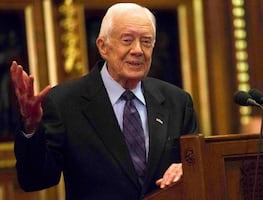Más Información

Científicos de la UNAM desarrollan lombricompostaje; una alternativa eficiente para el manejo de heces caninas

Anuncian cierre de oficinas de EU en México por funeral del expresidente Jimmy Carter; citas serán reprogramadas
By Giselle Rodríguez
From October 2015 to February 2016 Mexico City's Museo Archivo de la Fotografía offers a window into the 19th century Middle East through 86 digital copies of the photo collection of Clark Worswick, the first research fellow of Harvard University in film and photography.
The exhibition “Gardens of Sand: Commercial Photography in the Middle East 1859-1905” includes 86 images, among them works by the Abdullah Frères, three brothers of Armenian descent declared the official court photographers by Sultan Abdulaziz in 1863, Félix Bonfils and Emile Béchard from France, Francis Frith Jr., James Robertson and Frank Mason Good from England, Wilhelm Hammerschmidt, Otto Schoefft from Germany, Guillaume Berggren from Sweden, Lehnert & Landrock, E. Lauro from Italy as well as from the Tunisia-based studio Maison Garrigues, Pascal Sebah from Turkey, the Zangaki brothers from Greece and Muhammad Sadiq (Sulayman Al Hakim), one of the few Arab photographers of the time who was active in Damascus between 1880 and 1890 along with Abd Al-Ghaffar from Saudi Arabia.
The themes of the photos include monuments, buildings and people from Egypt, Syria, Saudi Arabia, Tunisia, Turkey and Lebanon.
Clark Worswick started buying photographs in 1959 and has remained an avid traveler, photographer and collector throughout his life.
In a lecture delivered at the museum, the photography historian said that he bought many of the photos in the 1960 and 70s, when Christie's and Sotheby's auctioned objects collected by 10 or 15 generations of British country families that were dumped into the market after changes enforced by the Labour government.
“This kind of photographs came out to the market for around 10 years and if you were not there to buy them you would never find them again”, Worswick explained.
About his Middle Eastern collection, Worswick said: “The uniqueness of this collection that my wife Joan and I have put together can be measured in one simple sentence: everybody has sold their collections I think except us. In the choices that we made, looking at many, many, many pictures, we chose photographs that we thought were great art, were great pictures.”
The photographers that took most of these images over a period of 45 years faced serious challenges, of which we can get an idea through the words of British photographer Francis Frith:
“The difficulties which I had to overcome in working collodion, in those hot and dry climates, were also very serious. When (at the Second Cataract, one thousand miles from the mouth of the Nile, with the thermometer at 110° in my tent) the collodion actually boiled when pouring upon the glass plate, I almost despaired of success. By degrees, however, I overcame this and other difficulties; but suffered a good deal throughout the journey from the severe labour rendered necessary by the rapidity with which every stage of the process must be accomplished in climates such as these; and from excessive perspiration, consequent on the suffocating heat of a small tent, from which every ray of light, and consequently every breath of air, was necessarily excluded.”
The exhibition is displayed at Guatemala 34, centro in Mexico City. It is open Tuesday to Sunday from 10:00 to 18:00 hrs. and admission is free.
This is a summary of the lecture delivered by Worswick at Museo Archivo de la Fotografía:









